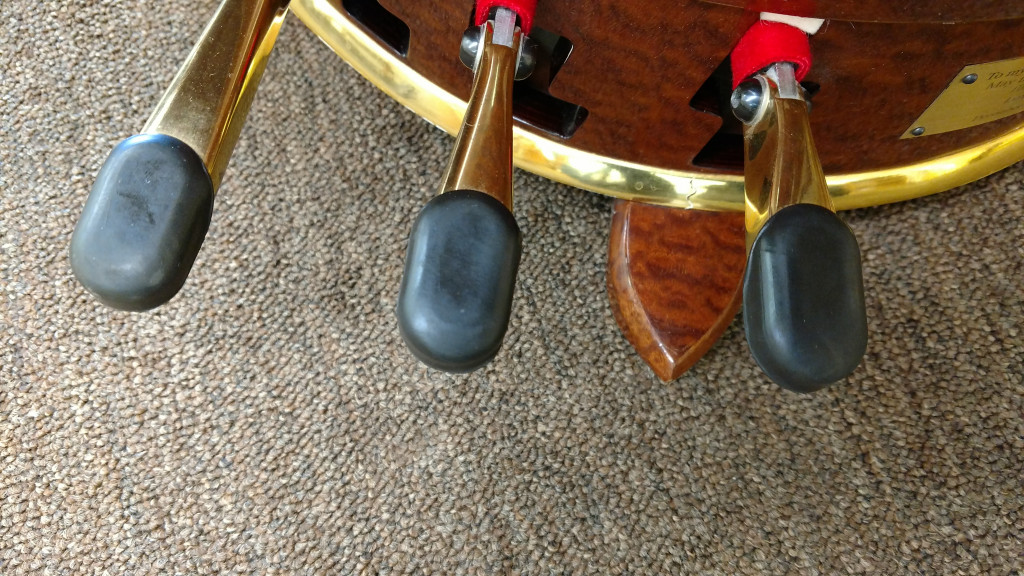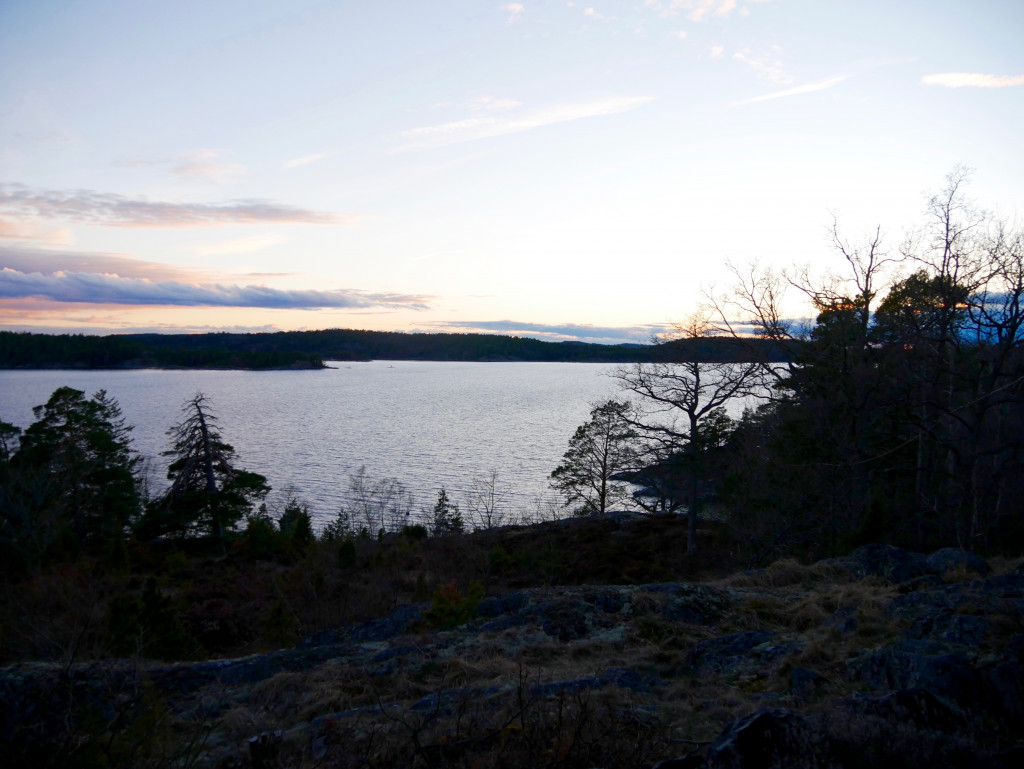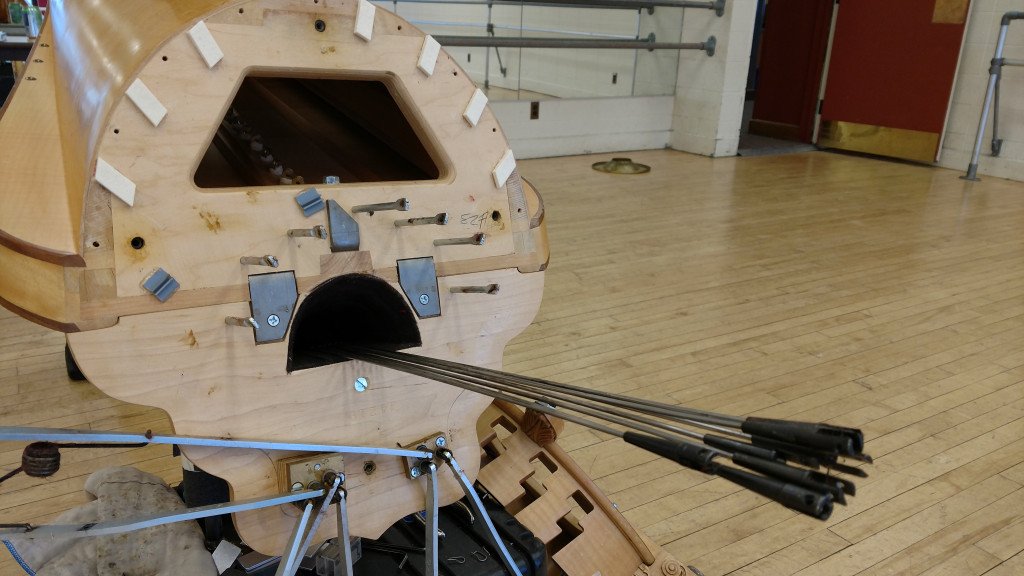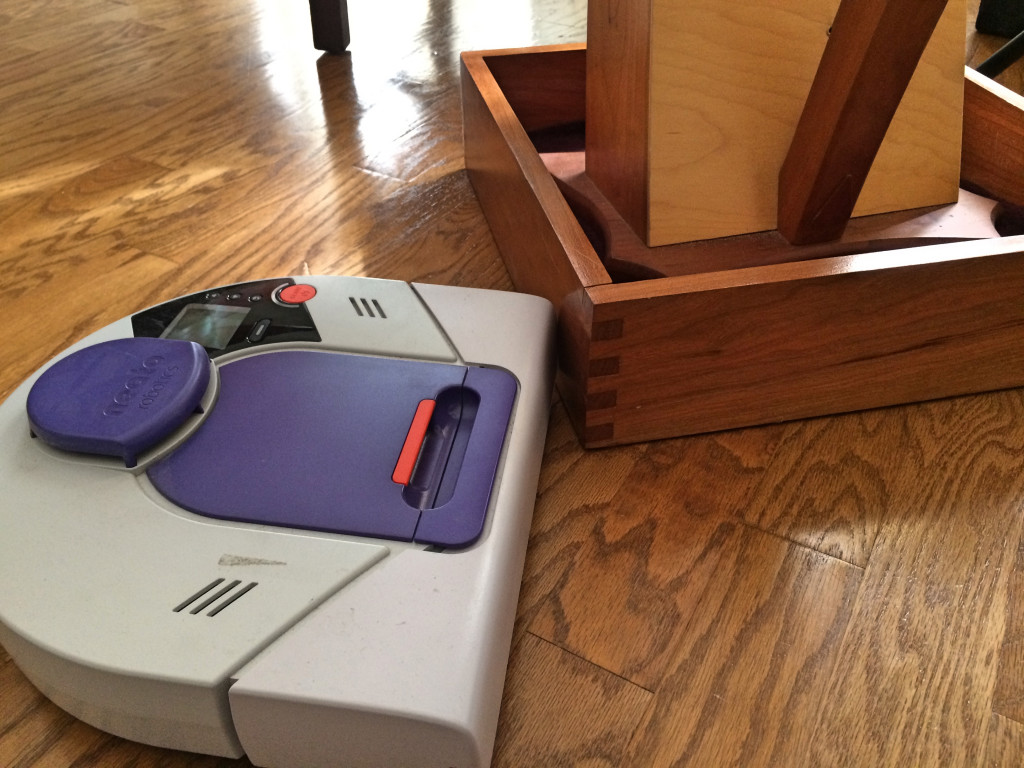Recently I played a concert in a rather rural area. The audience had little to no contact with classical concerts before (as quite a few told me afterwards) and most of them have never heard a solo-harp-recital in their lives. Still, when I announced „Next, I’m going to play for you the Moment Musicaux by Heinz-Joachim Zander, a contemporary composer, who died in 2010“ (no worries, if the name doesn’t ring a bell) a lot of people in the audience moaned, cringed and whispered things along the lines of „Oh dear, contamporary music!“
The „Moment Musicaux“ and – as my teacher told me – most of the other works of Mr. Zander are very far from experimental. They stand in the Hindemethian tradtion on fourths and fifth just stacked upon and next to each other. No loud, dissonant chords, no hitting the harp with things, no pedal noises; nothing to be „afraid of“. It’s a „tame“ piece of contemporary music. And still the mere mentioning of of the word „contemporary“ made people shudder with discomfort – without even knowing the piece.
This is – as those of you who put comtemporary music on their programmes will know – not a singularity. Play„Anamorphoses or Absidioles by Andrès or Sequenzen or Praeludium by Holliger or even something „older“ like one of the more experimental works of Salzedo, e.g. La Désiderade in one of your concerts and try to look into the faces of the first row during a fermata. You’ll most likely see either a mixture of disturbance and fear or will find them doodeling on their smartphones or talking to their neighbours.
Most people seem to be very preoccupied with listening to contemporary music. „That’s noise! Not music!“, „That’s too complicated for me“, „That’s silly!“ or „Can’t you play something nice?“ they say. And technically they are not wrong. A lot of contemporary composers try to redefine the line between „sound“, „noise“ and „music“. Their music isn’t supposed to be „nice“ or „easy listening“. But that does not make their music bad or „silly“. Of course there are pieces with a more convincing musical architecture and there are less sophisticated ones (likewise in compositional method and in terms of sound), but almost all of the pieces I have played – and have quite the soft spot for contemporary music, as you might have guessed – had something to them, that made them interesting to play. Be it the interesting approach to the musical possibilites of the harp, the extreme dynamics or the mere fun I had in figuring out rhythms and patterns.
In my humble oppinion, playing contemporary music, working yourself trhough pages sometimes cluttered with unknown signs or little chunks of text, telling you what kind of sound the composer had in mind while writing a certain bar or passage, has a benificial effect on you. You get to broaden your musical horizon; not only in terms of repertoire, but also in terms of technique, of possibilities of producing sound – it’s just marvellous and astonishing how flexible a harp is. For those of you, who want to work on their rhythm or their independcy of hands it does a pretty awsome job in helping you to really dig into a variety of problems – after playing Étude pour la sonorites variées by Nagatomi, I feel prepared for quite a lot of weird combination of tuplets in orchestral music. Contemporary music gives you the opportunity to be an explorer – you can dive into to the ideas behind a type of music that mostly does not use a harmonic structure or even a melody or a catchy phrase to make a coherent piece of music out of a pile of black dots on paper. You can teach yourself to think outside the box – or rather „outside the bar“: You’ll get to imrovise, to bring your own ideas to pieces – without having to learn a big cadenza. And don’t be afraid of contemporary music being „too difficult to learn“ or „full of complicated rhythms“. Of course you shouldn’t start by grabbing your best harp-friend and attempting a revival of Stockhausens Freude/Joy. But there are tons and tons of works in varying levels of exmerimental-nes for those of you, who don’t puruse a professional career or have not been playing for long– for pedal and lever harps, for harpists of all ages. (for example Hélèle Brechand: Lanterne magique, Armelle Gourlaouen: Pièce contemporaines pour jeunes harpistes or some of the Préludes by Salzedo).
Don’t be afraid to learn a piece of contemporary music. Don’t be shy to put it on your concert programme – on the one hand you will give the audience the possibility to dive into unknown sounds and fascinating musical landscapes, on the other hand you will do a bit to educate the „general audience“ towards being… well, less afraid of Heinz Holliger and his fellow living composers who worte music for our amazing instrument.












